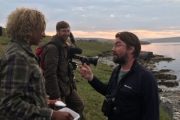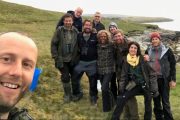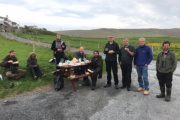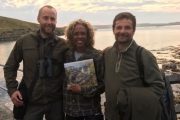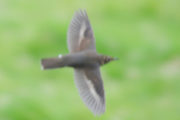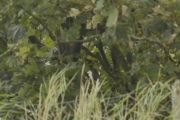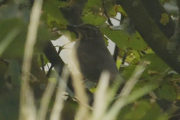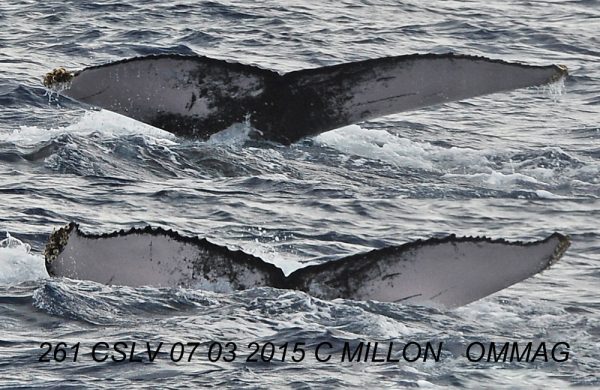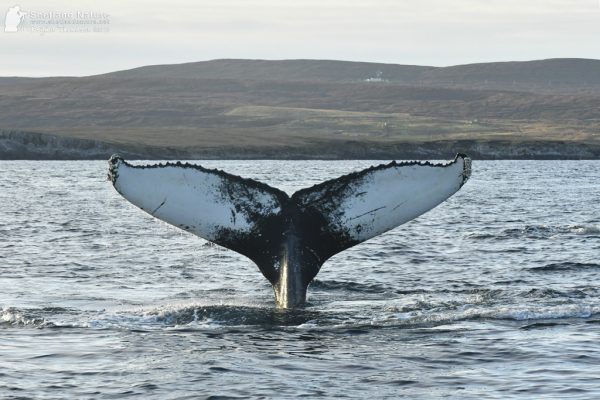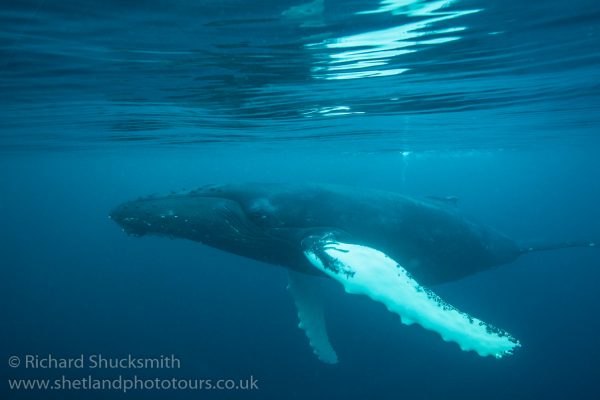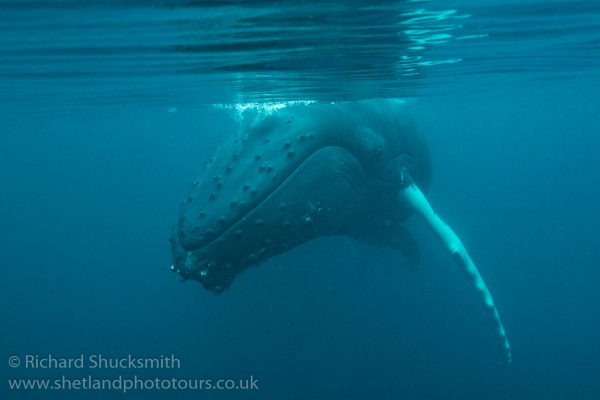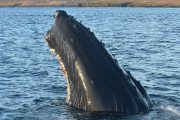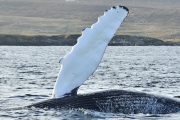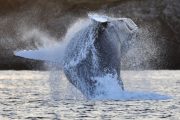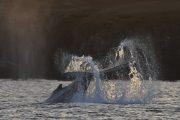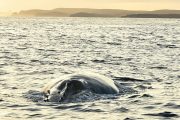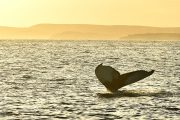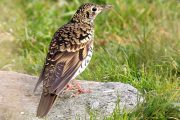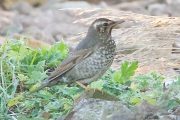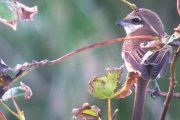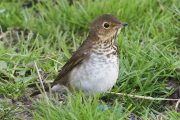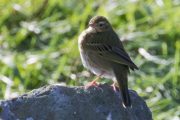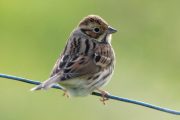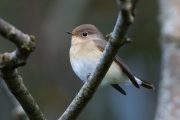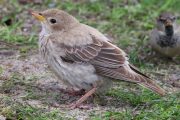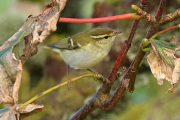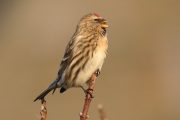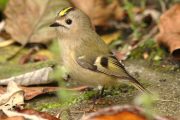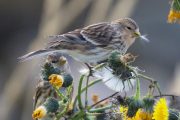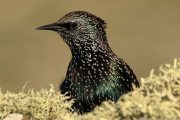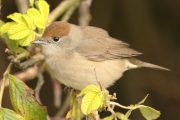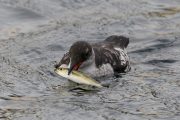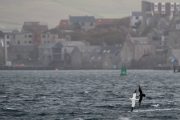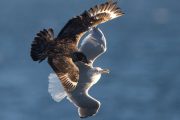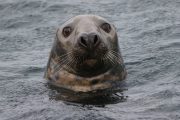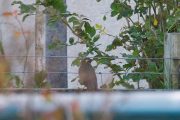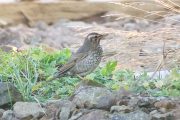BBC Springwatch back on Shetland – 2018
Posted by Brydon Thomason on Wednesday 30th May 2018 | Brydon's Shetland Nature Blog, News, TV Appearances
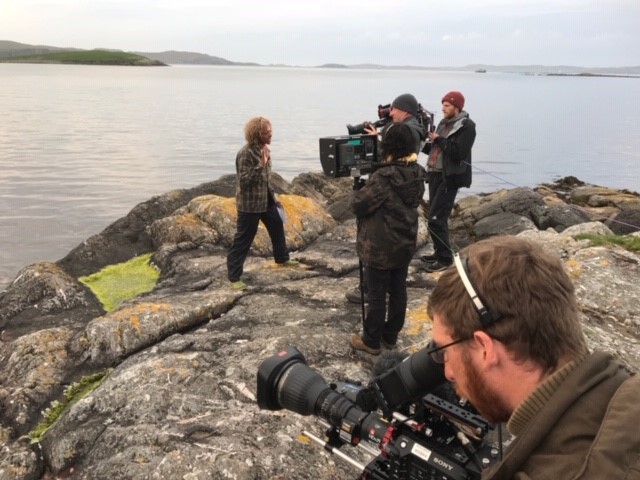
BBC Springwatch were back again for their third time to share or wild secrets with the nation and once again, we were thrilled to be involved.
It was particularly exciting series for us working as otter consultants/guides as Josh Jaggard, on his fourth season working with us here worked as one of their main cameramen. It was pretty cool for myself and Richard Shucksmith to be out with him on that assignment, especially given that’s what each of us do for our clients.
Working together we managed to get some good footage over the few days, perhaps the best of it was Josh’s sequence of a dog and bitch mating! Quite unique behaviour to see in the field let alone film.
The bar was raised when the series producer Stuart Armstrong asked us, “do you think we could get otters on screen for the live show”? A challenge it might certainly be, the tides especially were not ideal but we pulled it off, regardless of how far off in the bay it was!
It was fascinating working on the live show. Intense and exciting with no room for error or the nation knows! But nonetheless, everyone knows their role and what needs done and just gets on with it – it’s what they do!
As always the team and everyone we met were really good to work with, particularly Stuart and the presenter Gillian and Gretta the assistant producer.
I was really surprised to be asked to do a piece to camera about my my love for Birding my local patch, Halligarth right next door to our home. As the most northerly woodland in UK, amidst such a diversity of treeless habitat, annually attracting many exciting migrants it did actually make a nice feature. It turned out to make pretty cool short film and although never a massive fan of onscreen appearances, I was really pleased they pursued the idea – especially as I managed to get the whole family to appear on screen with me, all be it briefly!
Permalink
White-winged Scoter
Posted by Brydon Thomason on Friday 24th November 2017 | Birding in Shetland, Brydon's Shetland Nature Blog
On Wednesday 18th October Dougie Preston found a Ring-necked Duck on Sand Water, near Gutcher on Yell. A first for the island and Shetlands second in a week- this was in itself a worthy discovery. It was whilst photographing it however that his day was about to get even better. With the RND framed up in his viewfinder, an immature/female type Velvet Scoter shot through his field of view as it landed on the loch alongside the small flock of aythya ducks.
Instinctively he fired off a few frames, then almost immediately it started to dive. Barely two minutes later, at approximately 13:20pm the duck took flight, heading north in the direction of Gutcher and the Bluemull Sound area. He was immediately struck by its atypical head shape and bill profile, especially the latter which set alarm bells off as his as his mind’s eye recalled Birding Frontiers articles on White-winged Scoter! A very commendable shout indeed.
After consulting available literature on WWS Dougie posted a photo on the local WhatsApp group at 14:24pm which read; “Comments welcome… Only touched down very briefly on Sand Water Yell early afternoon“.
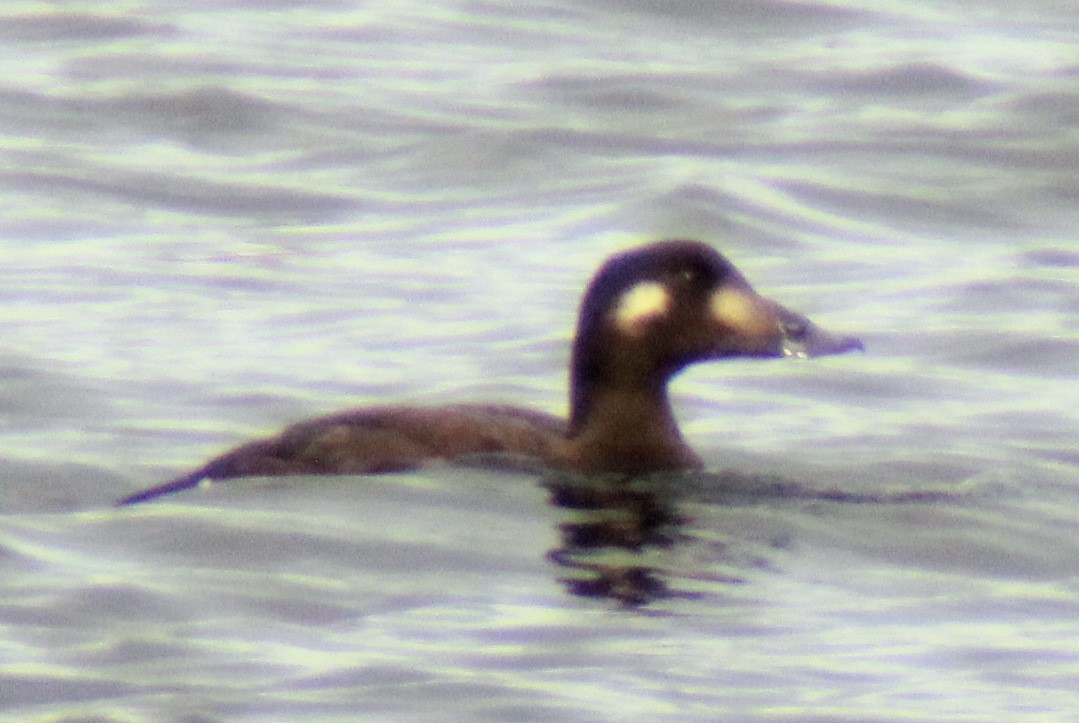
The image that got the ball rolling: White-winged Scoter, Sand Loch, Yell, 18 October 2017 (Dougie Preston).
Prior to this and completely unaware of the goings on, I was birding the Belmont Farm area, (having dropped off tour guests at the ferry) when I found a female/immature type Velvet Scoter at approximately 14:15pm on Loch of Belmont. With ‘bins only’ views and at quite a distance from the farm yard I hadn’t much to go on however was intrigued enough to want it in the scope. Velvet Scoter is a scarce enough bird in Shetland that any rarity savvy birder should always want scope views.
Returning to the car at far side of the farm I drove back through the yard in the hope of getting it in the scope however it and the Long-tailed Ducks it had been loosely associating with had gone. A scan of the ferry terminal and closest loch, Snaravoe drew a blank. It wasn’t until back in signal an hour later in Uyeasound that I picked up Dougie’s WhatsApp messages which had certainly sparked interest to say the least. Paul Harvey had been quick off the mark with positive feedback to Dougie’s post and had also contacted him directly to discuss the bird.
I was only five minutes away birding Uyeasound so hurried back, my heart racing as I thought it must surely be the same bird. It had returned to Loch of Belmont and now with scope views and a few hand held, shaky ‘iphone-scoped’ images I could see enough to see the same ‘Surf Scoter like’ appearance with square head shape and flat crown; raised bill profile and ‘broken nosed’ look.
With no signal I had to race down to the ferry terminal for WiFi to call for back-up from fellow Unst birders. I couldn’t get through to Micky Maher however Mike Pennington had already acted on intuition, knowing that Sand Water was just a few miles away (only 2.5 he later found out!), hoping to relocate the scoter and was literally just a few hundred yards up the road scanning Loch of Snaravoe.
Although the light conditions and distance from the bird were far from ideal Mike was keen on its ‘putative’ identity as was Micky Maher who arrived armed with various Birding Frontiers literature on White-winged Scoter identification. As we discussed the bird we shared thoughts and memories of our hugely missed friend Martin Garner, the ‘Birding Frontier’ himself and how he would have loved this bird. He would have been our first call and now always the first thought in such challenging ID’s.
Dave Cooper and Alan Conlin were not too far behind, each also arriving with the same articles in hand – the favoured being Guillermo Rodriguez Lazaro’s article on Birding Frontiers website which we found invaluable.
This was a peculiar situation for us in that although Dougie had already found and flagged it up, with only two previous British records and in a plumage not yet recorded in Europe, this still felt a difficult call to make.
It was now well after 16:00pm and light was poor but with dusk also approaching conditions were challenging, to say the least. It was increasingly harder to assess and be sure of features we thought we could see. At this stage however we were confident that based on its distinctive overall ‘Surf Scoter like’ head shape and appearance and especially bill structure, profile and length that this bird surely could not be a fusca– or at least was not like any we had ever seen but it was a very good fit for deglandi, having also considered Stejnegeri.
In addition to the above we were also struck by the size and position of the large oval shaped nostril, (we all commented that you could see straight through it) and now ‘genned-up’ on finer ID points on the bill feathering-pattern and angle, we knew what to look for. The latter looked to be a good fit and certainly did appear to extend beyond the nostril and more importantly formed a 90-degree angle. However in the difficult light conditions and distance this was not easy to assess with certainty and the unfortunate reality was that we just ran out of light and therefore time!
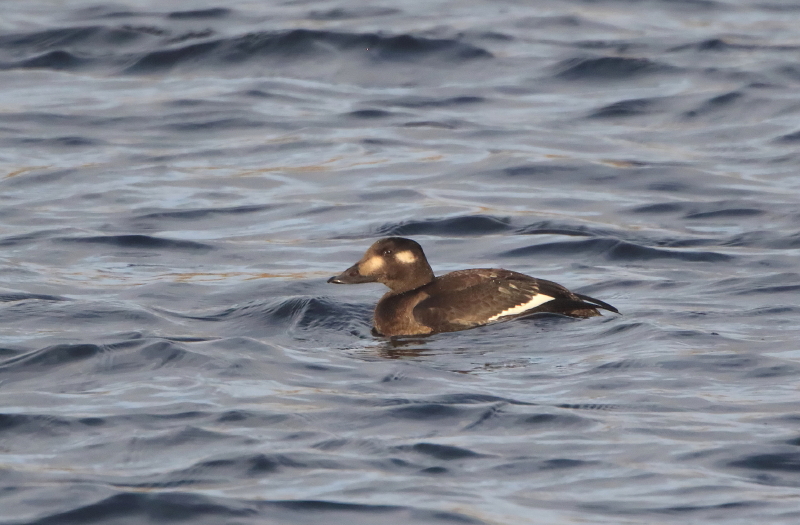
American White-winged Scoter, Loch of Belmont, Unst, 19 October 2017 (Robbie Brookes).
We decided on a cautious approach. It was agreed that further research of both Velvet and White-winged Scoter was needed and better still- closer views in the morning! We had also considered that realistically with ferry times no one would have been able to make it before dusk and after all news was already out on it.
We discussed the bird at length over the evening and put news out that it had been relocated on Loch of Belmont. I also spoke to Dougie who was naturally delighted that it had been relocated and to hear our opinion, very much in agreement with his. Of course this is said after just about every big birds identification but in hindsight we had enough at that stage for a conclusive identification that afternoon, especially with Dougie’s photograph and our field observations as well as supporting phone-scoped images.
With the chance to divulge and reflect confidence continued to grow later in the evening. Interestingly Margaret Pennington (Mike’s wife), pointed out a distinguishing feature that confirmed for certain they were the same bird. It was a small white smudge on the bill bellow its right hand nostril, which was consistent on all images.
Unfortunately Dougie had commitments the following morning so couldn’t be there with me at first light but thankfully it was still present. Mike and Dave arrived soon after and at last with better views there was a much more relaxed vibe as we watched the bird- helped eventually by shared opinion from Paul Harvey and Roger Riddington, who were amongst the first to arrive. They too agreed how subtle it was and how that in different circumstances it might have been overlooked but especially how well Dougie had done initially.
Needless to say it was quite the performer that morning! This was quite the opposite to our first encounter, allowing for really good images to be nailed which 100% confirmed the key features we’d tentatively noted, leaving many to have probably thought- oh yes, surely that was never a Velvet- it’s obviously a White-winged Scoter!!
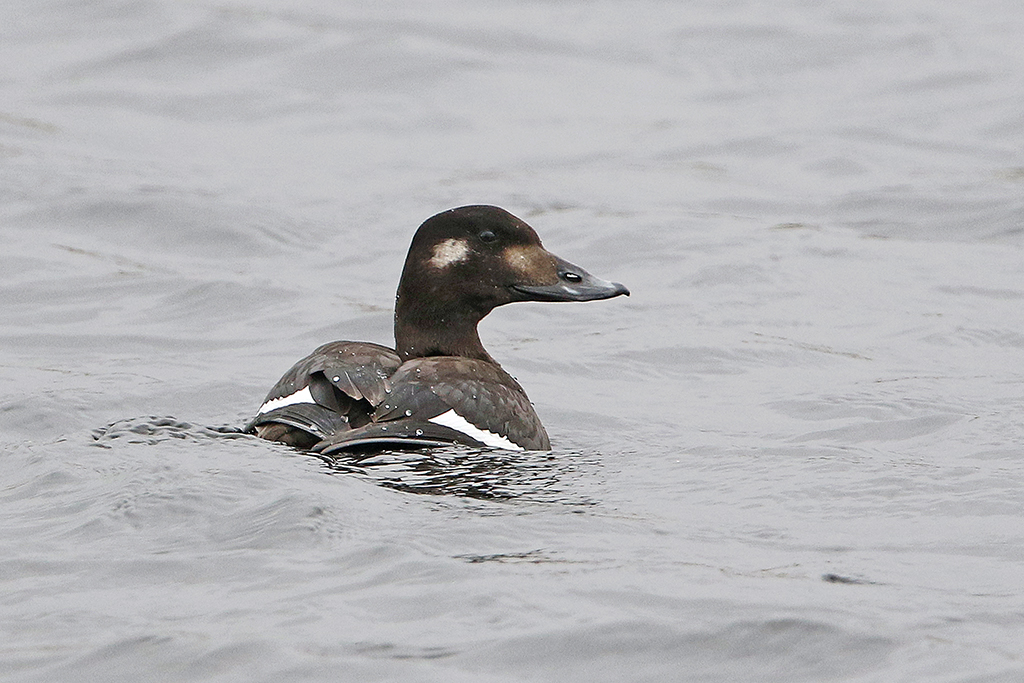
The American White-winged Scoter performed much closer on the morning of 19 October and allowed for excellent images to be taken, documenting the identification beyond all doubt. The distinctive head and bill structure are particularly apparent in this photo (Jim Nicolson).
Recently I contacted Guillermo Rodriguez asking him for comment and if we were right in thinking it was a 1st winter male. He responded:
“Hi Brydon, I fully agree with your diagnosis – the bird is a first-year male White-winged Scoter. Key features for ageing are the neat, homogeneous plumage, and velvet-like feathering around the bill, all certainly pointing towards a juvenile; sexing is slightly more complicated as this bird isn’t particularly short/long billed, but the relatively squared head and bumpy bill, and presence of significantly large white spots on the GC tips, all support sexing as male.
I’m leaving now for a trip so don’t have time to look for the originals – just take the pics you want from my post. And I agree Martin would have been super excited about this bird!
Best,
Guillermo”
Guillermo kindly allowed us to reproduce his composite of first-winter drake American White-winged Scoter images below, alongside an excellent image of a first-winter drake Velvet Scoter, taken in Shropshire in November 2016 by Dave Tromans. We believe these help to illustrate and compare the key features of fusca and deglandi, which were key to the identification of the Unst bird.
- Head shape tends to be more rounded in fusca, whereas deglandi shows a flatter crown and squarer, more Surf Scoter-like, appearance.
- The bill profile in fusca shows a distinct gentle concave profile, scooping downward from forecrown to bill tip, whereas deglandi shows a distinctively convex profile, creating a ‘broken-nosed’ appearance to the upperside. The bill was therefore deeper at the base, appearing to start from higher up on the forehead.
- In fusca the bill feathering stops before the position of the nostril and slopes back towards gape at about 40-degree angle, whereas in deglandi the feathering extends further, reaching below the nostril and forming a 90-degree angle. This is a feature that, although we were quite sure we could see, we found hard to assess at first. Closer views and images made this much easier.
- The nostril size and shape was quite striking; deglandi shows a larger and more oval-shaped nostril which, on the Unst bird, you could see right through, even at a distance, when the bill was in profile. This is in comparison to fusca, where the nostril is smaller and more rounded.
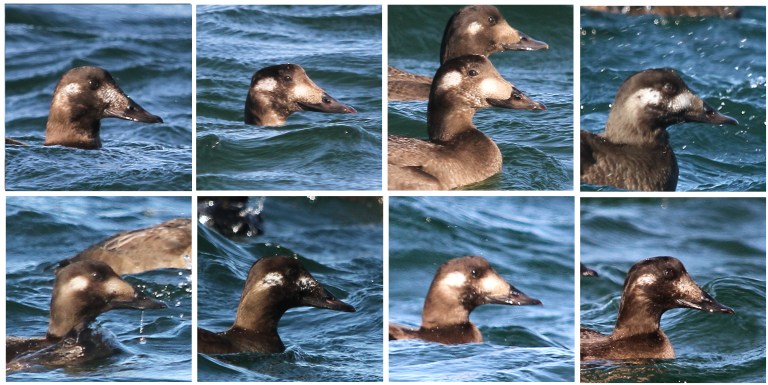
First-winter drake American White-winged Scoters, Crane Beach, Massachusetts, November 2016 (Guillermo Rodriguez).
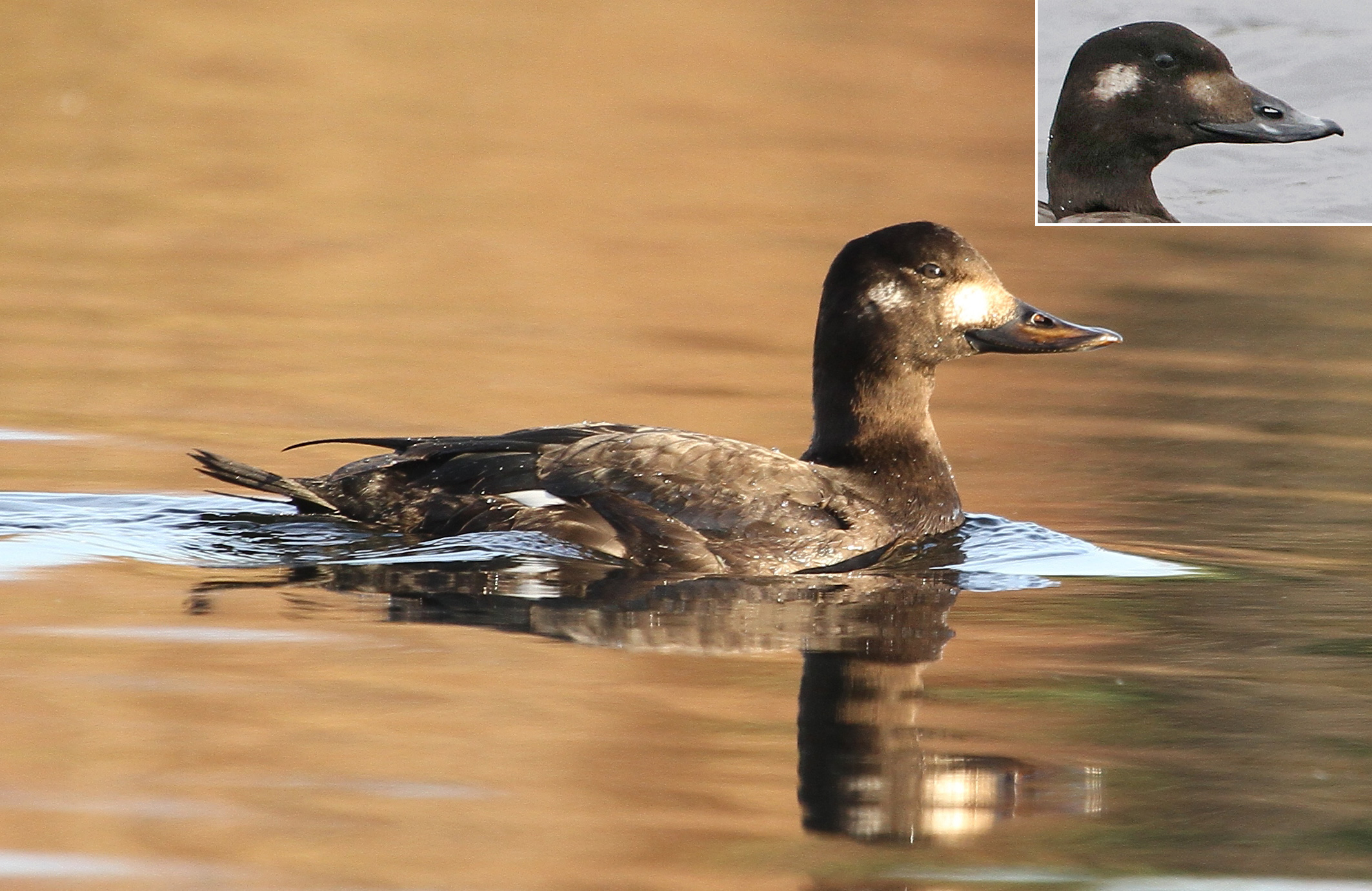
First-winter drake Velvet Scoter, Telford, Shropshire, November 2016 (Dave Tromans) with the Unst American White-winged Scoter for comparison.
Having fantasized about finding White-winged Scoter in Shetland this was a real privilege to have been part of this amazing bird and team effort, heralded by an impressive bit of impulse ID by Dougie. It was rather amusing that barely a week prior to this I found a juvenile Surf Scoter off Unst and on Twitter I joked that; “it was the third species of American duck on Unst in as many weeks- let’s hope the next one has white in its wings!”. Prior to the Surfie the island had already hosted Ring-necked Duck and American Wigeon.
It is perhaps relevant to add that it was later to transpire that this bird had been identified and actually photographed as a Velvet Scoter off Belmont just a few days before.
Hopefully this bird may serve to encourage/remind birders to scrutinise all ages and sexes of all Velvets, when possible. Having not been seen here since the 22nd of October, might this bird turn up again in a scoter flock somewhere in the country or even perhaps Europe?
Permalink
The Siberian Thrush, Baltasound, Unst, September 2017
Posted by Brydon Thomason on Monday 25th September 2017 | Birding in Shetland, Brydon's Shetland Nature Blog
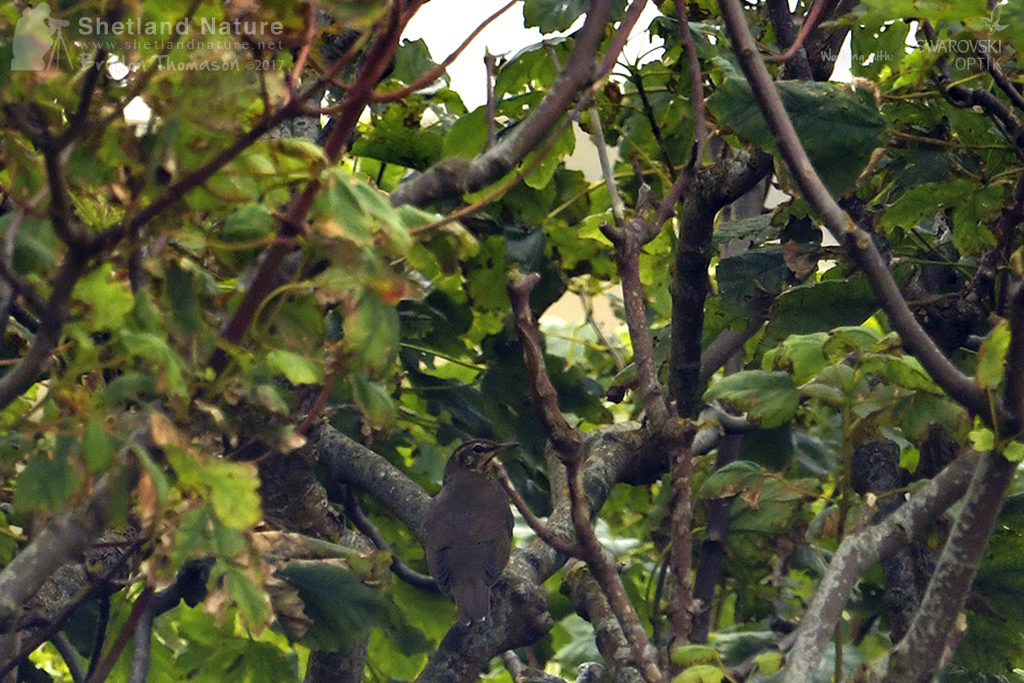
I opened our front room curtains about 07:30am. I’d been slow to get up due to your daughter Nula (15 months) having a restless night’s sleep, resulting in me having none! Two Yellow-browed Warblers chasing each other round the trees however was enough to get me fired- I grabbed my bins and set off for my morning circuit next door in Halligarth. The previous fall of Yellow-brows had been cleared out for a couple of days so clearly there were new arrivals. A third followed by two Willow Warbler and two Garden Warbler was enough to prompt a text to Roger Riddington; ‘New birds in!’, I wrote excitedly.
It was one of those flat calm mornings that just feels ‘rare’, that indescribable autumn atmosphere when you feel a monster rare is possible. The above tally was enough to convince me to carry on for an hour after breakfast and putting bairns to school. 12 Yellow-brows and an hour later, it was time to head home- I had work to do preparing for starting ground works with digger arriving next day.
A quick jaunt across Baltasound to borrow a ‘pinch bar’ (for lifting paving slabs), from Robbie Brookes was in order and on route yet more YBW’s caught my eye along the Ordaal road. Two feisty ‘Sibeie’ sprites were chasing each other round a roadside garden, visible from the car so I stopped and pulled over. Id tried earlier, with zero success to photograph one so I thought I’d try again, with a cheeky of the gardens too!
Standing outside the garden on the roadside, I’d been mimicking their sweet little call and probably doing a pretty poor job, but they’d posed nicely. A few frames in the bag, feeling mildly pleased at my efforts a bird flew up from just a couple of feet from me, out of base of hedge, flying straight across garden away from me and landing in a Sycamore only 30-40ft away.
As is often the way, it could only have been a three or four seconds glimpse as it flew across- as fast as mind could process….distinct white corners to outer tail… flashes in the wing…scaly plumage– WHITES THRUSH?? But no, even in such a short few second view I knew before it even landed it was too small and what it had to be. Even though I’d had my camera raised, shooting the YBW’s, I still dropped it to raise my trusted EL 10 x 42’s and man, I am actually so glad I did! There, superbly scaly and ‘superciliumed’, shadowed in Sycamore canopy was a female SIBERIAN THRUSH!!
When writing up a rarity or if lucky a mega, it’s almost customary to describe the overriding surge of adrenalin coursing through the body but strangely, today I was actually rather ‘together’ and level headed, (although my legs did feel considerably weaker than normal!). I think because it was so strikingly obvious, even on this first two views and I had no doubt as to what it was, maybe helped me keep it together? It’s hard to say.
After perching for just a few seconds, it flew out the garden, calling as it went- a beautiful and quite sweet but fairly clear ‘tssi’, rather like a cross between a Song Thrush and a Hawfinch. The wing bars; white outer tips to tail and underwing patterns combined to create a truly sensational sight. Grabbing for my phone to get news out and the lads around was actually when the reality and shakes started to hit me. Now ok, there had already been five Sibe Thrushes in Shetland and the last was only a year ago (and on Unst!) but still, this is a dream Sibe, still one of the ‘big guns from the east’ and although we allow ourselves to dream of such things, I don’t think I ever imagined finding one!
Perhaps predictably EE network was down so I’d have to leave the site and the bird to use a phone but thought hang on, I’ve just found a Sibe Thrush(!) which I’ve only seen for a few seconds- If I risk leaving it I could risk losing it! I had another couple of flushes and flight views as it flew from garden to garden (barely 50 yards apart), but it was remarkably reluctant to show. Over ten to fifteen minutes I felt it appeared settled between the two gardens so legged it along road to use a landline or Wi-Fi signal.
Within five minutes the lads started to arrive and to my and everyone else’s relief, it showed well enough, even if only tantalising flight views for all that made it. With permission to enter its favoured fly-to garden by Mike Pennington I was able to encourage it out a couple of times. We all agreed it best then to leave her in peace and by before 14:00pm, less than two hours from when it had been found, we had all left. Way too often birders put far too much pressure on birds that are reluctant to show meaning they don’t have time to feed and rest.
To my knowledge everyone arriving over course of afternoon managed to see it too and thankfully everyone even behaved!
The images above actually capture the overall experience quite realistically, especially Rebecca’s back-of-the-camera flight shot. It was surprising just how astonishingly good flight views were, especially through bins. Rebecca and I both mocked our own efforts from photographers perspectives but celebrated them from birding ones!
Having refrained from twitching the Uyeasound bird last year and not having seen any of the previous birds, this little lady was all the more tremendous. I had however seen them in China about ten years ago and so could well remember their frustratingly elusive nature and she certainly lived up to that. Over the course of the two hours I was there (including with everyone one else) I only saw her twice actually perched in sycamores in view- never once in full view on the ground, nor did anyone else as far as I’m aware! Unfortunately there was no sign the following day.
This was the 12th record for Britain and the 6th for Shetland. A big thanks to Brian and Beth Edwards for allowing me to use their phone and to Jim Mouatt for being so accommodating round his and his mothers gardens.
Brydon Thomason
Permalink
A Humpback ID match UK first: Caribbean/Shetland Islands
Posted by Brydon Thomason on Wednesday 15th February 2017 | Sea Mammals in Shetland
I find it quite incredible to write about yet another chapter in the story of Humpback Whales that spent five weeks this winter between Yell, Fetlar and Unst. Each part of the story to unfold has certainly been worth sharing and now, none more so than this one. It is thanks to a very exciting, encouraging and gratifying international collaboration we discovered that for the first time ever a Humpback Whale has been recorded in British waters from the breeding grounds off Guadeloupe, in the southeast Caribbean!
Back in early December I was able to capture several close-up images of at least two of the five whales tale flukes. In addition to the thrill in nailing images of Humpbacks I would never before have thought possible in Shetland, I could see that potentially for the first time ever in Shetland or even UK waters, good enough images of the detail needed for ID work may be possible. As many who have seen or worked on Humpbacks in UK waters, getting good close up and detailed images of tail flukes are rarely possible. I put some ‘feelers out’ by email and via social media with a couple of images, asking for any help and also to The North Norwegian Humpback Whale Catalogue (NNHWC).
Far from being anything near an expert on Humpback Whales I hoped that the Norwegian wintering populations might make most sense however the NNHWC, as helpful as they were did not find a match. It was on Twitter however that Dan Lettice recommended Pádraig Whooley of The Irish Whale and Dolphin Group (http://www.iwdg.ie/). This was where it really began to pick up pace. Pádraig was totally fantastic, a wealth of knowledge about Humpbacks and their movements, especially through their work off Ireland but also his tireless enthusiasm and passion. Straight away he took on to do what he could with their humpback whale photo ID database but more so recommended I send the images to The North Atlantic Humpback Whale Catalogue (NAHWC) at the College of the Atlantic, Bar Harbor, Maine, USA. (http://www.coa.edu/allied-whale/research/)
As had been the case from Ireland and Norway, they were thrilled to receive images and offer help. From the offset I had cc’d each organisation into the email sent to Maine and so the collaboration began. Each and every one of us was as amazed as the other when word came back- they had found a match! This same whale had been photographed on the breeding grounds off Guadeloupe in the Caribbean!! The first ever match from British waters to their breeding grounds!
It was Frederick Wenzel (NAHWC) who picked out the match from their database, the largest of its kind with >9,000 individual tail fluke images (spanning from 1976 to 2016) maintained at Allied Whale; by Judy Allen, Peter Stevick and Tom Fernald.
Laurent Bouveret, who directs the OMMAG Observatoire des Mammifères Marins de l’Archipel Guadeloupéen (OMMAG) (http://ommag.info/) project, which includes hundreds of photos of whales from the eastern Caribbean was thrilled with the news; “Fred and Tom you made my day!! In attachment, our picture taken by Whale watcher Cedric Millon from Guadeloupe Evasion Découverte company, the 7th March 2015, leeward side of Guadeloupe Main Island N 16.2161111 W -61.814166, an adult accompanied with another adult”.
How amazing was that for the same whale to be photographed here in Shetland approximately 4,500 miles away! Interestingly on the day of the encounter, this whale was again accompanied with another adult. Although I did nail ID images of its tail flukes however, there have been no further matches. I couldn’t help but wonder if it could be the same two whales still together.
Padraig’s response and his enthusiastic ‘sportingly competitive’ banter especially amused me; “Crikey… how’s that for beginners luck? We’ve been sending Irish humpbacks for years to the NAHWC catalogue without a single match to a breeding ground, and our friends in Shetland manage a match on their 1st share- Wonderful news!”
“This really sets the cat among the pigeons as we’ve had something of a working hypothesis that our Irish humpbacks are more likely to be from the Cape Verdes on this side of the Atlantic. This is a great result and an important contribution to our understanding of these iconic animals”
Although this is the first ever match from UK or Ireland to a breeding ground there has been many photographic matches from Norwegian waters to the Cape Verde Islands as well as the Caribbean. At this time, the Irish humpback collection has produced matches to the Netherlands, Gibraltar, Iceland and Norway.
Having had the sharp eyes to pick out the match Frederick Wenzel has conducted photo-ID matching of right whale, blue whales and humpbacks for many years. “I voluntarily curate the Cape Verde Island humpback catalogue, and work closely with Fredrik, Laurent, Padraig and many others in this international collaboration … Wenzel currently works for the US govt. at NOAA, National Marine Fisheries Service, Northeast Fisheries Science Center, Woods Hole, Massachusetts, USA on large whales, pinnipeds, foraging ecology and bycatch for small cetaceans and seals.
“At times, I can say I have a photographic memory…I recognize flukes. I have seen before…however, in the same breath…I may not remember someone’s name, but I recognize their face”.
In Norway (NNHWC), Fredrik Broms has produced some interesting matches to Iceland, Cape Verde Islands, Guadeloupe and the Dominican Republic. The team at NNHWC are currently working on a very interesting project having satellite-tagged ten humpbacks off Tromsø this winter. You can find out more about this at https://whaletracking.uit.no/.
This unprecedented ID match in itself is of course significant and will hopefully perhaps help to grow our understanding of these wonderful creatures and their movements. For me personally I was just lucky to be in the right place at the right time to get a shot good enough images to assess by the researchers and organisations. It is however their ongoing commitment, research and perhaps above all collaboration that makes discoveries such as these possible.
Something that I noticed straight away when I started to look to where to send images was that there isn’t actually a UK catalogue/project. Granted of course there are some great organisations doing fantastic and very important work such as Sea Watch Foundation but no one is yet to set up an actual ID catalogue/database. This appears to be something that the international projects already working together are aware of and can see the need for.
But of course a reason for this may well be that as mentioned above there are very few good enough images that exist in British waters but as Pádraig pointed out, it only takes one image to start and already we have a result; “It will be great If interested groups could come together to document these animals in Scottish waters and a good way to pull this together is by setting up a Scottish humpback whale catalogue”.
With the quality of camera equipment used by so many people now and indeed social media there has never been a better time for this to start and as I found out with images from our encounters, anyone can contribute and make a difference. With such a fantastic and growing success story for Humpback Whales it seems quite likely we will have opportunity to enjoy them and hopefully help further our understanding of their movements.
A huge thank you to the following individuals and organisations for their help and collaboration; Pádraig Whooley of The Irish Whale and Dolphin Group; Frederik Wenzel, Thomas Fernald, Judy Allen and Peter Stevick of the NAHWC; Laurent Bouveret of the OMMAG; Frederick Broms of NNHWC and Cedric Millon from Guadeloupe Evasion Découverte company OMMAG https://www.facebook.com/ommag971/ and http://www.guadeloupeevasiondecouverte.com/
View previous posts:
Permalink
Underwater Humpback Whales in Shetland: a UK photography first
Posted by Brydon Thomason on Friday 6th January 2017 | Sea Mammals in Shetland
In early December 2016 I had enjoyed a truly unforgettable encounter with the Humpback Whales off Yell, as had many others fortunate enough to see them over their four week stay. Stunned to have enjoyed such unprecedented photographic opportunities in Shetland waters, I couldn’t help myself from sharing the experience via some ‘light hearted banter’ with good friend and colleague Richard Shucksmith who was away working on Scottish Mainland and being honest, I knew would be gutted to be missing out!
Knowing the wider potential and photographic opportunity to be made the most of, (especially with Richard’s expertise), capturing imagery of their underwater world was our number one priority on his return home. With a perfect forecast on 16/12/16 of clear skies and mirror calm seas all other projects were set aside and thankfully Peter Hunter was also available to take us out on his boat.
Setting out that beautiful frosty morning with the sun rising to light up a cloudless blue sky we were buzzing with hope, excitement and even a little angst as the reality was that although the whales had been reported daily, they could leave any day. We were also well aware that even if they were still there but did not perform our plans may amount to little more than memories of what we could have done.
Our good fortune had extended beyond the weather window- the whales were still there. We were intrigued to notice straight away however that only two of the five we had spent time with earlier in the month remained. These were two smaller individuals, which we thought to be sub adults, clearly smaller than the full grown adults that had performed so well previously.
As it had been on our earlier encounter, a responsible approach was imperative. Cutting the engine, we waited several hundred metres from the whales carefully watching to see if they were perhaps working a circuit, into which we could slowly move towards allowing them the opportunity to approach us, as opposed to us them. However inquisitive whales sometimes may seem with boats, the dangers or damage that can be caused must never be underestimated, if they don’t come to you, you shouldn’t go to or go after them.
In a true team effort approach we positioned ourselves in such a way that Richard could slip into the water well in advance of the approaching whales, hoping they would show similar interest as before. With Peter driving the boat, myself and him helping Richard in and out the water to work on the underwater images whilst I filmed the encounter from the boat.
Interestingly however although they clearly came towards us and checked us out, it was obvious that their behaviour was very different from the others. Instead, once their slight curiosity appeared to be satisfied by a single pass by it appeared as if they had no further interest. It was only later, when out in deeper water of Colgrave Sound working a larger circuit that they decided to check Richard out a second time.
These two encounters however brief were truly epic to us and for none more so than Richard in the water with them, sharing such privileged moments in their world and on their terms. In a international context there is some remarkable imagery of Humpback Whales from both underwater and on the surface perspectives. To our knowledge however these are the first ever images to be taken of Humpback Whales in British waters which made the whole experience and assignment all the more special. We were all the more delighted to see how popular a response the images and footage gained throughout the media making not only several News papers and magazines but also on both BBC Scotland and STV News channels on TV. See the footage here and for more from Richard visit and follow his Facbook page.
View Follow-up Post: A Humpback ID match UK first: Caribbean/Shetland Islands
Permalink
Humpback Whales off Shetland, December 2016
Posted by Brydon Thomason on Thursday 15th December 2016 | Sea Mammals in Shetland
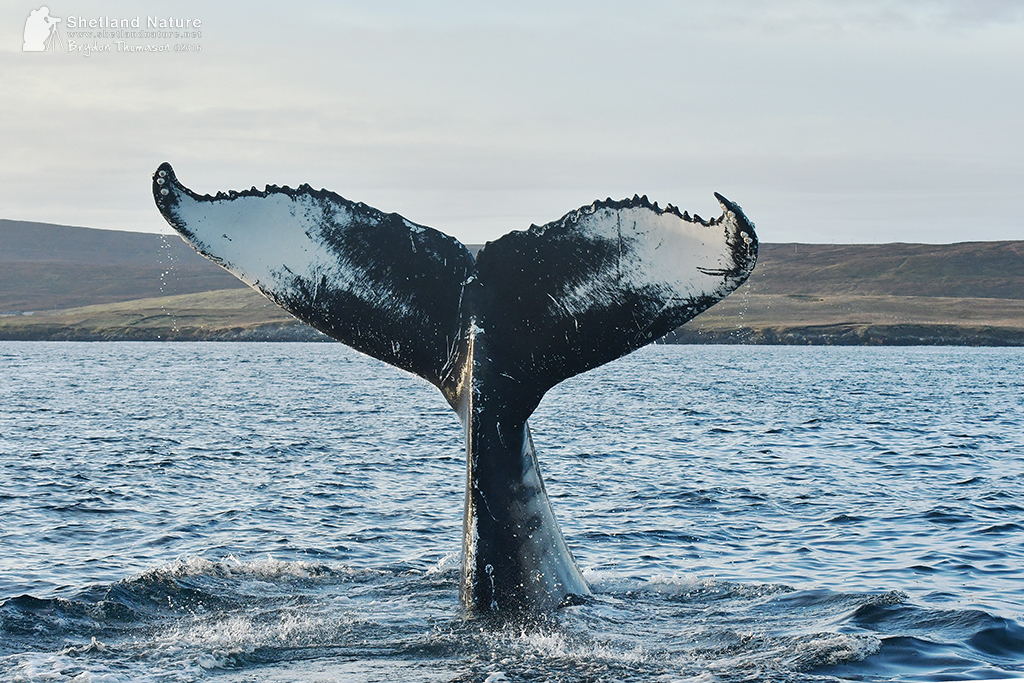
How often do we travel to far flung and exotic locations and continents in search of wildlife? I know this is something I personally used to do and enjoyed immensely. But to see species that otherwise may lure us overseas, right on our home turf takes some beating. If planning a trip for example for the best encounters with Humpback Whales, exotic locations such as Antarctica, Baja Calafornia, Hawaii or closer to home Iceland would all feature on the list but Shetland in mid winter?
This set of images were all taken just last week on the 2nd December off Yell, Shetland. Over the past three weeks there has been up to four Humpbacks inshore between Yell, Fetlar and Unst. They have especially favoured the stretch of water south of Hascosay off Vatster and further south along east side of Yell. We’ve enjoyed sightings of Humpbacks moving north through this area into Bluemull Sound several times now in recent winters, (with mid to late winter appearing to be peak time) but this year they have hung around.
What we were amazed to find on the day we took a boat trip with Peter Hunter out to look for them was that in the area they are favouring most the sea was literally solid with Mackerel shoals, often reading on the sonar down to a depth of 30m, a mass of mackerel from surface to bottom! We could not say however whether they were actually feeding although it looked as though they were. In total we spent about two hours with them before needing to head home as the mid winter sun started to set. I feel really lucky to have seen ‘Humpies’ many times in Shetland and in some truly awesome locations such as Antarctica and Hawaii but this was an encounter I will never forget.
They appeared completely at ease with the boat and our presence, obviously taking a responsible approach we would cut the engine and drift, with them repeatedly working a circuit they’d come right to us, often surfacing as close as 10 metres from the boat, when their blows sprayed our very faces. They passed many times right under us, the ghostly form of the white pectoral fins clearly visible just a few metres bellow.
Seeing any cetacean at close quarters is a true privilege but this day they took the show to another level and really did perform. It was as if they wanted to show us everything they had; spyhopping, pectoral fin and tail surface slapping, the characteristic and iconic tail flukes but the best of all was the positively epic full breach.
I was particularly intrigued by the tail slapping; far from being any sort of cetacean expert I assumed that like Killer Whales, which I often see tail slapping that it would be in some way related to feeding technique or just for fun but it appears it is also thought to be a way of communication. This would make sense as the four whales, paired off in two’s (but seen together on other days) kept quite some distance from each other, usually at least half a mile or more while we were there but always in the vicinity.
It is clear that Humpback whales in British waters is certainly becoming increasingly more regular. Over the past decade sightings have increased particularly off of North East Scotland, western Isles and indeed Northern Isles and we are seeing them annually here. With population recovering well in North Atlantic it is quite probable that occurrences will continue to rise. It is not yet clear however whether British sightings involve western or eastern Atlantic populations although the latter, including Norway and Iceland seems more likely. These areas have seen significant increase in Herring and Mackerel population especially so may tie in with why they are here too. Who knows, perhaps they are now present inshore year round, which would explain the sightings throughout the seasons.
I have sent images for ID purposes to the Sea Watch Foundation and North Norwegian Humpback Whale Catalogue project and very much look forward to see if they come back with any matches…
View Follow-up Post: A Humpback ID match UK first: Caribbean/Shetland Islands
Permalink
2016 Shetland Autumn Birding review, part one
Posted by Brydon Thomason on Friday 25th November 2016 | Birding in Shetland, News
A review of our Autumn Birding season; part 1, in association with Birdwatch Magazine & Birguides
This season our core birding weeks, led by Rob Fray and Gary Bell, as usual ran over the last week of September and first week of October however we had itineraries running through to third week in October. It goes without saying this year that it has been The most epic of autumns and therefore by far our most exciting to date. We were delighted to welcome a good balance of both new and regular SN customers, some of which just can’t miss a single autumn for fear of what they might miss and this year that was a very, very wise decision!
Week one was for the most part frustratingly dominated with westerlies and Atlantic low pressure systems, bringing with it quite a lot of rain and not so many birds, at least compared to the following week! It’s not to say it was without highlights though, with birds already present and new ones arriving when the weather finally changed, there were plenty.
It’s crazy to say it but over a week that often saw very difficult birding conditions, with strong winds and lashing rain the list of birds on Shetland over the week was more than impressive, to name but a few of the rarities; Pallid Harrier, Olive-backed Pipit; Paddyfield, Arctic and Radde’s Warblers however probably the most enjoyable/obliging for our guests were Blyth’s Reed (s), Greenish and Dusky Warblers and best of all the Brown Shrike at Aith was certainly the rarest bird of the week.
Scarcities were not far from the limelight either with an equally impressive supporting cast throughout the isles. Rose Coloured Starling, Little Bunting, Hoopoe, Hawfinch and Red-breasted Flycatcher were all present whilst a pod of Pilot Whales in Lerwick harbour showed that there is can always be a cetacean surprise even in autumn.
Rolling into week two the pace certainly picked up. Over night between 01-2/10/16 the weather brought an exciting change from the south east, which was to hold throughout the entire month. This was the beginnings of the most extraordinary October on record. The first of over five weeks of easterlies set a pretty high standard with top drawer tackle such as yet another Brown Shrike (with a third being discovered later!), the first of multiple Red-flanked Bluetail, Great Snipe Lanceolated Warbler followed by Swainson’s and multiple Whites and Black-throated Thrushes but the star of the ‘thrush fest’ was the superb 1st year male Siberian Thrush which was a joint, team effort find for our group and Dave Bradnum, Howard and Bob Vaughan. Another good find for our group was a Hornemann’s Arctic Redpoll, one of several which presumably arrived the previous week of NW winds. A Western Orphean Warbler was a real surprise and mega but proved to be frustratingly elusive after its initial discovery.
In addition to the outstanding cast of sizzling Sibes throughout the week there was Paddyfield and Blyth’s Reed Warblers along with multiple Radde’s, Dusky and Pallas’s Warblers, Olive-backed and Richards Pipits, Bluethroat and Red-backed Shrike whilst in typical Shetland autumn standard Yellow-browed Warblers were pretty much everywhere throughout the islands as well as Little Buntings and Red-breasted Flycatchers here and there whilst interestingly Barred warbler and Common Rosefinch were much scarcer than our usual autumns however, it’s quite safe to say that low numbers of the latter would not have crossed anyone’s mind given the superb quality of birds on offer during the first half of our Shetland Autumn Birding season.
Part two to follow soon…
Permalink
Siberian Thrush 6th October 2016, Uyeasound, Unst, Shetland
Posted by Brydon Thomason on Tuesday 22nd November 2016 | Birding in Shetland
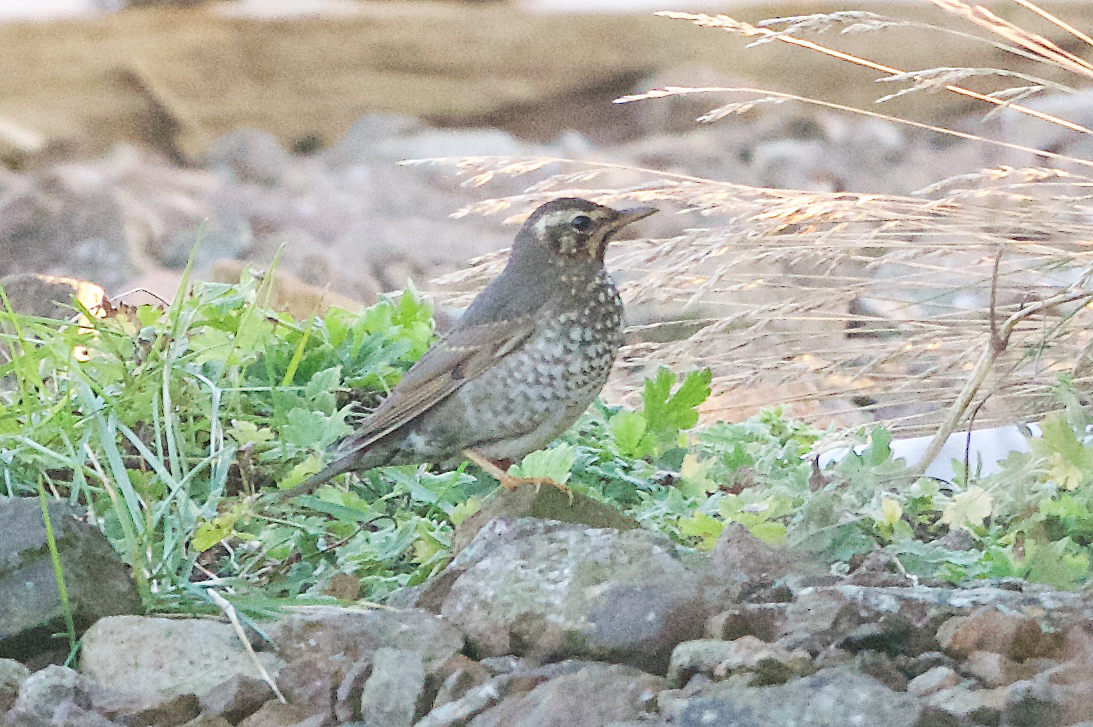
A finders account by one of this year’s clients, Anthony Griffiths who had chosen this year to be his first year to experience Shetland in autumn…
I can’t remember a time when I wasn’t interested in natural history and Birding in particular. As the years have passed I have become more keen on seeing and even more so, in finding, rare birds.
I have long dreamed of visiting the fabled Shetland Isles, especially in October, to witness autumn migration at its best. This was the year that I managed it for the first time, but it certainly will not be the last.
I chose Shetland Nature to be my guides for this trip as I share the ethos of the company to group find birds by well organised searches of any suitable habitat across the islands rather than simply chasing after other peoples finds.
We had had an excellent start to our trip encountering several Shetland specialities including a fantastic Lanceolated and Blyths Reed Warblers on our first day.
We then had a ‘Thrushtastic’ afternoon on Fetlar with an amazing White’s and a very confiding Swainson’s Thrushes within a mile of each other!!
On the 6th October we were on Unst all day. We started at the valley of Norwick where there was a steady, significant movement of common thrushes and finches, (mostly Bramblings) streaming down the valley all morning along with Goldcrests in every bush, certainly a very promising start to the day!
We then spent an hour or so wading through the boggy fields below Norwick trying to flush the Great Snipe that had been present there for several days. We did flush a heavy bird with heavily marked underparts but had frustratingly brief views.
Sadly the day then went a little quiet, but only for a while! We dipped Common Rosefinch at Haroldswick and the long staying Hornemanns Arctic Redpoll at Clingera.
Looking for a bird to keep the day moving we headed to Uyeasound where a Barred Warbler had been reported as ‘showing well’, not a comment you hear relating to this species very often! When we arrived we met a birder who was just leaving who told us where it was last seen, it was sunbathing on a bush in one of the few large gardens in the Hamlet. Sadly, however, by the time we got there, of course there was no sign!
The group spread out to search for it and we were soon joined by 2 other teams of birders and there were soon around 15 of us searching the gardens and fields of Uyeasound. After about 1/2 hour we were starting to feel that we had missed our chance. I had been chatting with Howard Vaughan and David Bradnum, 2 members of a team that we had already bumped into several times during the week. We had just started to spread out again when a moderate sized thrush shot past first Howard and then myself and we could immediately see the unmistakable black and white underwing of a thrush of Siberian origin which instantly set the adrenaline flowing as any member of this group would be a superb find on Shetland, or anywhere in the UK for that matter!
Howard initially shouted “Whites!!!!’ as he had seen the spotted underparts but something didn’t feel right as the bird wasn’t big enough. It then flew directly over David and a few others where it briefly alighted on a tree and they could clearly see the very bold eye stripe and the shouts from the side of the house were very loud and very clear, ‘SIBERIAN, its definitely a SIBERIAN!!!!’
The bird then rocketed back round the house, back over Howard and myself across a small field and dived into a large Rosa bush in a very small back garden of a terrace house by the harbour.
I had, fortunately, unclipped my Camera and managed to fire off a series of shots as it flew across the field, more in hope than expectation, that I would capture any usable shots but I was delighted to review them once the bird had taken refuge in the Rosa and see that, although they were never going win any prizes, I had somehow managed to get a few shots that were able to confirm the identification. The black and white underwing pattern was clear, as was the very bold supercilium and it was also possible to see the dark blue upperparts indicating that the bird was a first winter male.
-
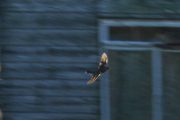
-
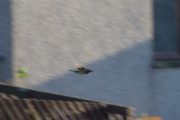
Once all the birders in our group and the other ‘teams’ had gathered, at a reasonable distance from the garden, our first aim was to get the news out to allow the other birders on Unst to connect with ‘our’ bird. As there was only about an hours light left it was going to be very difficult for anybody not already on Unst to connect that night. The main problem was that nobody had any mobile reception, fortunately though somebody managed to jump onto a local wifi connection and the news was out! The grape vine obviously went into full flow as it was only a few minutes before cars started to speed into the Hamlet with birders pouring out well before the wheels had stopped!
After a short while of staking out the garden it popped up onto the fence for just long enough for me to take a couple of shots before it flew out of the garden and out over the bay at, which time we thought it would carry on and be lost but it obviously thought better of it and did a turn and shot back into its new favourite garden, promptly vanishing back into the Rosa. It soon came out again and landed in view by the large warehouse where some of our group managed much better shots than I had managed of the bird on the ground in full view, these were the real ‘money’ shots showing all the salient identification features ( apart from ‘that’ underwing!)
It continued to show on and off in ‘its’ garden for all up until dusk.
We hung around for a while, getting more views of the bird and just generally soaking up the atmosphere of being part of the finding of such rare bird. This (assuming it is accepted) was only be the 10th record for the British isles!
It is such a great feeling to be able to see the anxious faces of red faced birders running to the site turn into huge grins as they catch that first sight of a new bird.
What an incredible end to yet another magnificent day on Shetland, Gary Drove us back to our accommodation, the bus was a mix of stunned silence and euphoria.
Once back at the hotel we soon found ourselves in the bar, toasting the day with a pint or 2 of the local brew!
Sadly there was no sign the following morning, we reckoned that somewhere around 50 birders managed to see the Thrush on that Thursday evening.
Many thanks to the great organization of Shetland nature, our excellent guide ( Gary Bell) and to whoever managed to arrange for such productive Siberian Easterly airflow for the whole of our trip, continuing for the whole of October resulting it what must surely go down as one of the best Octobers for Eastern rarities on record. Not a bad year to pick for my first trip to Shetland, and to coin a phrase…….I’ll be back!
Anthony Griffiths
Permalink



